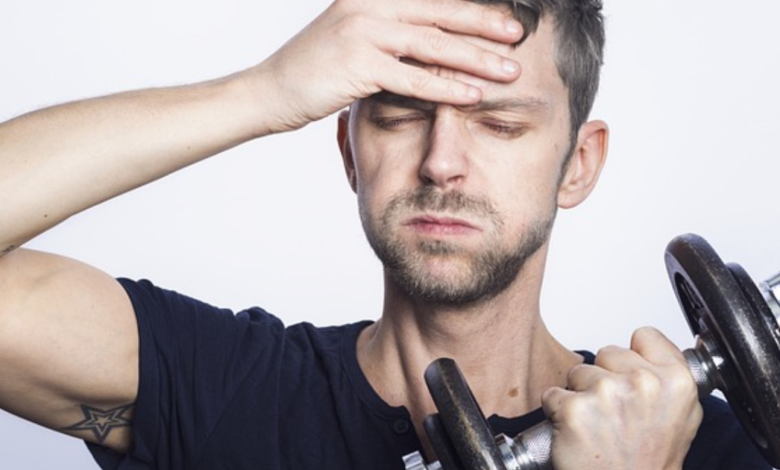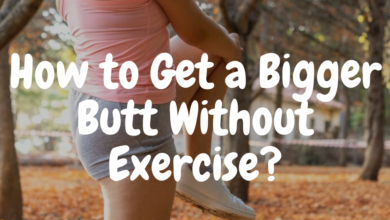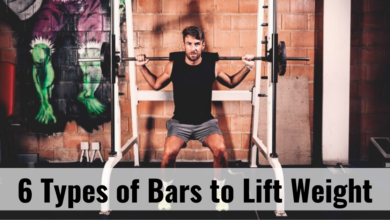Why Do We Tired On Quick Exercise?

Feeling tired after a quick exercise session is a common experience many of us have encountered. Despite the brevity of the workout, our bodies can still exhibit signs of fatigue. Several factors that affect our physiology contribute to this phenomenon.
First and foremost, physical exertion triggers the release of adrenaline and other stress hormones, which can leave us feeling drained. Additionally, quick exercises may not provide enough time for our muscles to fully warm up, leading to increased strain and subsequent fatigue.
Furthermore, inadequate rest or recovery periods between exercises can contribute to the feeling of tiredness. Understanding the underlying causes of fatigue in quick exercise sessions can help us better manage our energy levels and optimize our workouts for improved performance.

Understanding Quick Exercise
Quick exercises, when you’re tired on quick exercise, provide time-efficient health benefits with short bursts of activity. These exercises, lasting just a few minutes, require minimal equipment and space while elevating heart rate, increasing blood flow, and engaging multiple muscle groups. Examples include jumping jacks, squats, push-ups, high knees, and plank holds.
The benefits of incorporating quick exercises into your routine are numerous. They can help improve cardiovascular fitness, strengthen muscles, increase flexibility, and enhance overall stamina. Additionally, individuals with limited time for longer workouts can easily integrate quick exercises into their busy schedule, making them accessible.
To maximize the effectiveness of quick exercises, it’s essential to perform them with proper form and intensity. Warm-up before starting, maintain good posture, and listen to your body to prevent injury. Remember, consistency is key. Even a few minutes of quick exercise each day can contribute to improved fitness levels and overall well-being. So, whether you’re at home, work, or traveling, take a quick exercise break and reap the benefits of a healthier lifestyle.
Energy Systems and Quick Exercise
Energy systems are responsible for providing the necessary fuel to power our bodies during exercise. There are three main energy systems: the phosphagen system, the glycolytic system, and the oxidative system.
The phosphagen system is the primary source of energy for short bursts of high-intensity exercise. It utilizes stored ATP (adenosine triphosphate) and creatine phosphate to generate energy rapidly, but it depletes quickly.
The glycolytic system comes into play for moderate to high-intensity exercise lasting longer than a few seconds. It breaks down stored glycogen into glucose and converts it into ATP. This system provides energy for activities like sprinting or weightlifting.
The oxidative system is the primary energy provider for low to moderate-intensity exercise lasting longer than a few minutes. It utilizes oxygen to break down carbohydrates, fats, and even proteins to produce ATP. This system jogs, cycles, or engages in long-distance running, while quickly getting tired during exercise.
The Impact of Quick Exercise on the Body
Quick exercises have a significant impact on the body, even in short durations. Engaging in brief physical activities, such as a brisk walk, a few minutes of jumping jacks, or a set of push-ups, can have several positive effects.
Firstly, quick exercises increase blood circulation, delivering more oxygen and nutrients to the muscles. This helps enhance cardiovascular health and improves overall endurance. Additionally, it boosts metabolism, aiding in weight management and fat burning.
Additionally, when feeling tired, engaging in quick exercise can stimulate the release of endorphins, known as “feel-good” hormones. This provides an immediate mood boost, reducing stress, anxiety, and depression, while also enhancing cognitive function and promoting mental clarity.
Lastly, quick exercises help strengthen muscles and increase flexibility. Regular short bursts of activity can improve muscle tone and enhance joint mobility, reducing the risk of injuries.
Although quick exercises may not provide the same benefits as longer, more intense workouts, they still play a vital role in maintaining overall health and well-being. By incorporating brief physical activities into daily routines, individuals can experience positive changes in their physical, mental, and emotional states.
Energy Systems at Play during Quick Exercise
During quick exercises, our bodies rely on different energy systems to provide the necessary fuel. The three primary energy systems involved are the phosphagen system, the glycolytic system, and the aerobic system.
The phosphagen system is the immediate source of energy and utilizes stored ATP (adenosine triphosphate) in the muscles. It provides short bursts of energy for intense activities such as sprinting or jumping.
The glycolytic system takes effect when the phosphagen system becomes depleted. It relies on the breakdown of glucose, either stored as glycogen in the muscles or delivered through the bloodstream, to generate ATP. During high-intensity exercises lasting up to a few minutes, such as weightlifting or fast-paced interval training, people use this system.

Physiological Responses to Quick Exercise
Quick exercise elicits a variety of physiological responses within the body. When engaging in short bursts of physical activity, such as a brief bout of high-intensity exercise, several changes occur. First, the heart rate increases rapidly to meet the heightened demand for oxygen and nutrients in the muscles. This elevated heart rate leads to increased blood flow and improved circulation throughout the body. Enhanced oxygen delivery to the working muscles enables them to perform optimally.
Quick exercise also triggers the release of endorphins, which are neurotransmitters that act as natural painkillers and mood elevators. These endorphins promote a sense of well-being and can help reduce stress and anxiety. Additionally, short bursts of exercise can improve cognitive function and mental alertness, enhancing focus and productivity.
Furthermore, quick exercise stimulates the release of adrenaline, which increases energy levels and boosts metabolism. This response can contribute to fat burning and weight management.
Muscle Fatigue and Quick Exercise
Muscle fatigue is a common phenomenon that occurs when muscles are subjected to prolonged or intense physical activity. It is characterized by a decline in muscle performance, reduced strength, and a sense of exhaustion. To combat muscle fatigue and quickly regain energy, a short burst of exercise can be beneficial.
Engaging in brief, high-intensity exercises, such as jumping jacks, burpees, or squat jumps, can stimulate blood flow, activate dormant muscle fibers, and increase oxygen supply to fatigued muscles. These quick exercises help to flush out metabolic waste products, such as lactic acid, which contribute to muscle fatigue.
Furthermore, engaging in physical activities can also trigger the release of endorphins, improving mood and reducing feelings of fatigue. However, it is crucial to listen to your body and refrain from pushing yourself too hard when feeling tired on quick exercise. Excessive exertion can actually exacerbate fatigue. By incorporating short bursts of high-intensity exercise, individuals can effectively combat muscle fatigue and swiftly restore energy levels.
Oxygen Debt and Quick Exercise
Oxygen debt, also known as the oxygen deficit, refers to the temporary shortage of oxygen in the body that occurs during intense exercise. When engaging in quick, high-intensity exercise, the body’s demand for oxygen increases rapidly. However, the cardiovascular system takes some time to deliver an adequate oxygen supply to the working muscles. As a result, the body resorts to anaerobic metabolism, breaking down glucose without oxygen to produce energy. This process generates lactic acid as a byproduct, causing fatigue and discomfort.
After the intense exercise ends, the body enters a recovery phase. During this time, the oxygen debt must be repaid. The increased oxygen uptake helps remove lactic acid, restore depleted energy stores, and replenish oxygen levels in the tissues. This repayment process is why individuals may continue to breathe heavily even after they have stopped exercising.
Conclusion
In conclusion, it is normal to feel tired after engaging in quick exercise due to several reasons. Firstly, quick exercises often involve high-intensity movements, which can quickly deplete our energy stores. Additionally, our muscles and cardiovascular system work harder during rapid exercise, leading to fatigue.
Moreover, the body may experience a buildup of lactic acid, contributing to the feeling of tiredness.
Lastly, quick exercises may not allow sufficient time for our bodies to adapt and recover, causing fatigue to set in more quickly. Overall, tiredness after quick exercise is a natural response to the physical demands placed on our bodies.

FAQs
Why do I get tired quickly when exercising?
Possible reasons for getting tired quickly during exercise include poor fitness levels, lack of sleep, dehydration, and improper nutrition.
Why do I get tired after 5 minutes of exercise?
There can be several reasons for feeling tired after just 5 minutes of exercise, including poor fitness, dehydration, or low energy levels.
How do I increase my stamina?
To increase stamina: exercise regularly, gradually increase intensity, incorporate cardio workouts, maintain a balanced diet, stay hydrated, and get enough rest.
Should I stop working out if I feel weak?
If you feel weak during your workout, it’s generally recommended to listen to your body and take a break.




daxktilogibigibi.Gve3UP36H6qE
smatteringly xyandanxvurulmus.jfOjBENPsmLA
I have been surfing online more than 3 hours today yet I never found any interesting article like yours It is pretty worth enough for me In my opinion if all web owners and bloggers made good content as you did the web will be much more useful than ever before
Thanks for your opinion